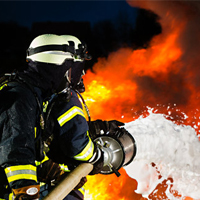A year and a pandemic later, what is the status of the California Phased Investigation of PFAS?
Per- and polyfluoroalkyl substances (PFAS) are turning up across the Golden State. The State Water Board released preliminary data in March 2020 which suggests around half of the 600 public water supply wells near landfills, military installations, and airports have detections of PFOA, PFOS, or other PFAS. Unsurprisingly, there have been an even higher number of detections of PFAS from monitoring well, leachate, and soil sampling at airports and landfills themselves. Given the historical uses of PFAS in Anti-Film Forming Foam (AFFF) to smother aviation fires and their use in consumer products fated to enter landfills, PFAS detection was to be expected and the reason for prioritizing those sources for investigation first. Now that California is at, or nearing, the end of Phase I and II of the data collection under the Board’s PFAS Phased Investigation Plan, there are strong indications that Phase III is imminent.
The following is a brief recap of the original plan and what we can likely expect in the coming months. When the Division of Drinking Water (DDW) and the Division of Water Quality (DWQ) announced the Board’s phased approach in March 2019, the plans included an aggressive timeline. Not much has changed with regard to the Phase I and II plans to collect detection data and, as reported above, some preliminary results have already been complied. The quarterly monitoring of at-risk water supply wells came to an end in March 2020, and completion of the landfill PFAS testing during routine monitoring should result in all of that data being available soon. Site-specific questionnaires and work plans for the Chrome Plating industry were all due by March 31, 2020, following an extension from the October 2019 deadline.
Which brings us to the major change to the Board’s PFAS investigation: the timeline. Originally, Phase III—set to include wastewater treatment and pretreatment facilities—was to begin in late summer or fall of 2019. Phase III also included industrial facilities, refineries, bulk terminals, non-airport fire training areas, and possibly more domestic wells. There are likely a number of different factors that resulted in the delay, including the lack of EPA multi-laboratory validated and published methods for non-potable liquids and solids along with California Laboratory Accreditation for PFAS in those matrices. The Coronavirus pandemic and stay-at-home orders no doubt added additional delay this year.
Although the EPA has yet to finalize wastewater and solids methods, CA ELAP was able to add PFAS accreditation to the Field of Testing (FOT) for non-potable liquids in the middle of 2019 by adopting other Federal agency standards. Laboratories approved by ELAP to perform PFAS in compliance with Department of Defense (DoD) Table B-15 of Quality Systems (QSM) version 5.1 or later can conduct wastewater and other non-drinking water analyses. In September 2019, the California Association of Sanitation Agencies (CASA) submitted a comment letter to the Board regarding their concerns with Phase III implementation and have been in discussions since. Six to nine months later than first planned, the DWQ appears ready to send out California Water Code section 13267 orders to Publicly Owned Treatment Works (POTW). According to discussions with Santa Ana Regional Water Quality Control Board staff and POTW members of CASA, these orders will likely be issued in July 2020.
Will we find more PFAS during this next phase of the investigation? The short answer is yes. The good news, however, is that preliminary data from our local Santa Ana watershed show that levels are low. Source identification and mitigation efforts within watersheds is already underway. Babcock Laboratories continues to be ready to provide testing in support of the California Phased Investigation Approach and the agencies committed to working toward a safer environment for our communities.

